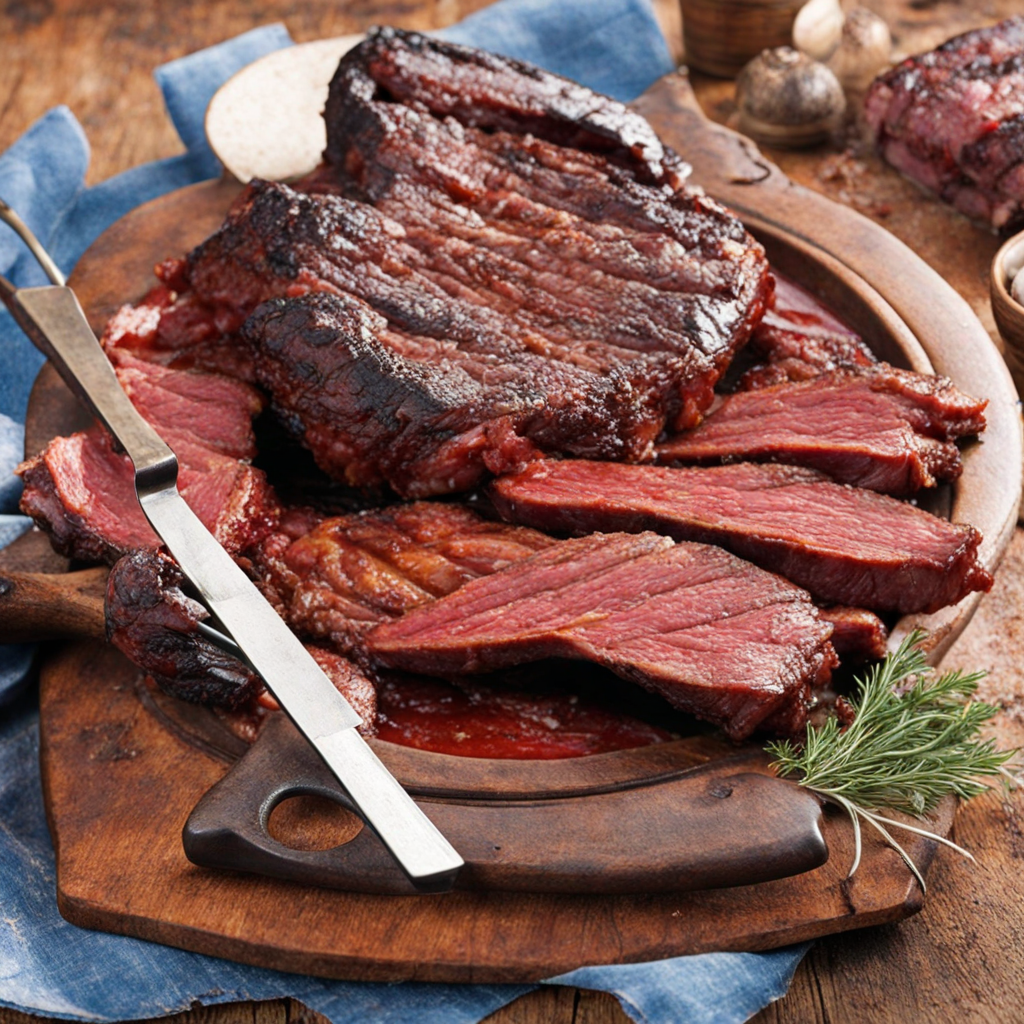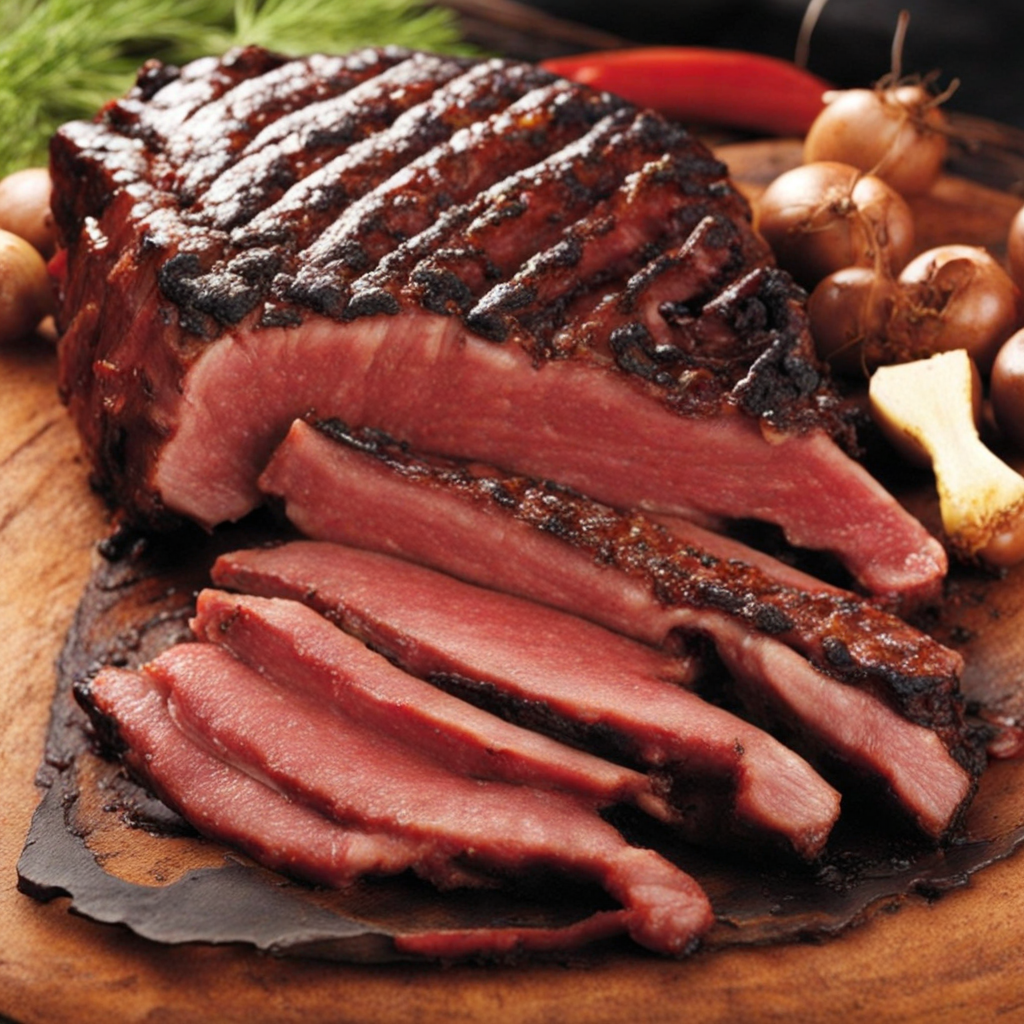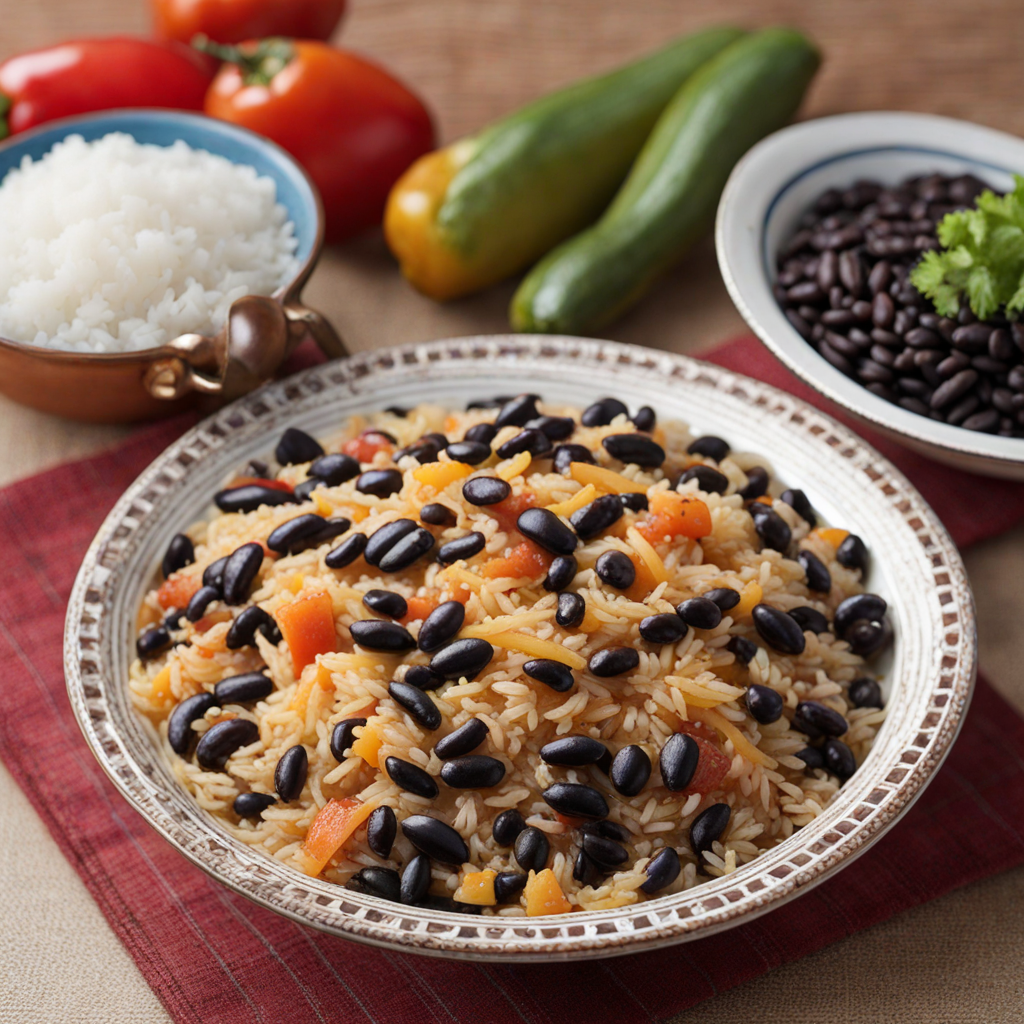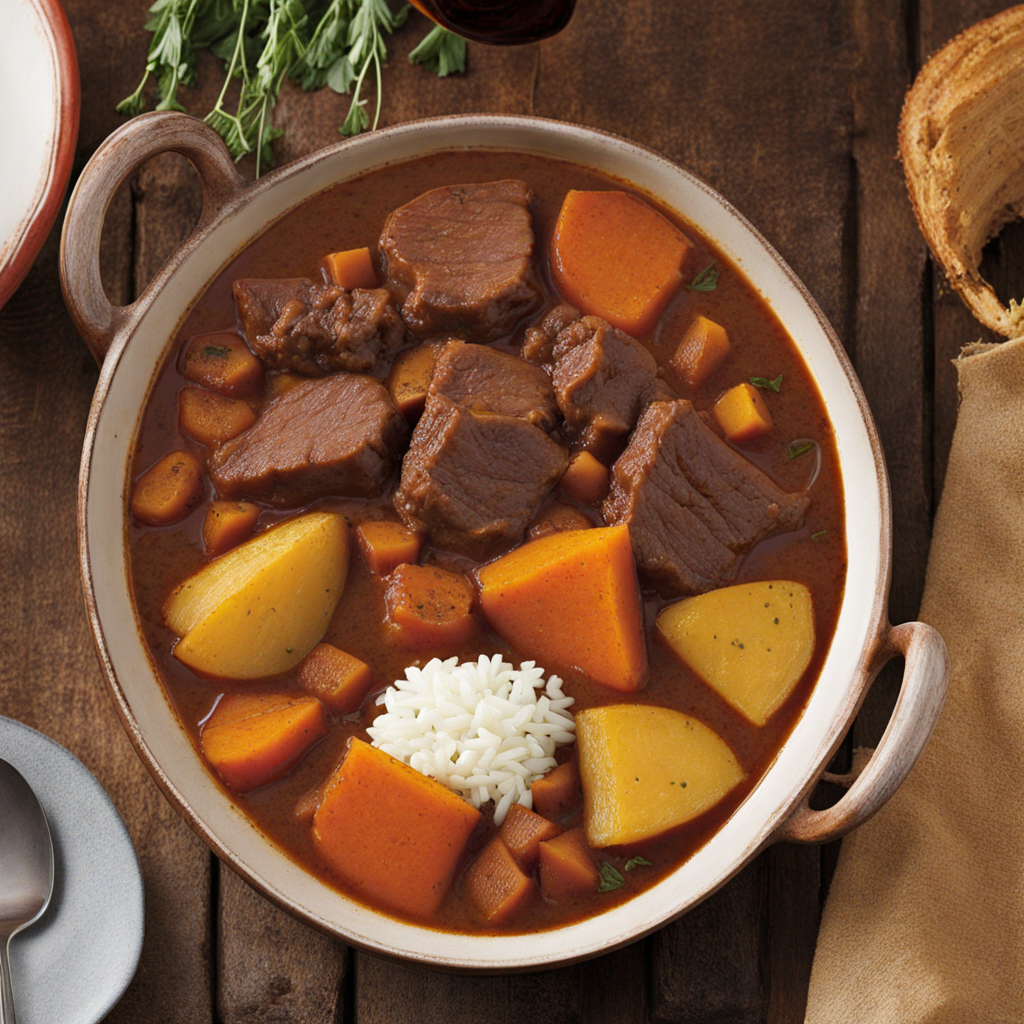Asado con Cuero
Asado con Cuero is a traditional Uruguayan dish that showcases the country's rich culinary heritage and love for beef. This dish primarily features a whole cow, often cooked with its skin on, which adds a unique texture and flavor to the meat. The preparation involves marinating the beef with a blend of spices, herbs, and sometimes a touch of citrus to enhance its natural flavors. The entire cut is then slowly cooked over an open flame or an asado grill, allowing the smoky aroma to permeate the meat, transforming it into a succulent delight that is both tender and juicy. The cooking process of Asado con Cuero is an art form in itself, often taking several hours to achieve the perfect balance of crispy skin and mouthwatering interior. The outer layer of the skin, or cuero, becomes beautifully charred and crunchy, providing a satisfying contrast to the tender meat beneath. This preparation method not only enhances the beef's flavor but also creates an unforgettable sensory experience, as the combination of smoke, fire, and the aroma of grilling fills the air, inviting everyone to gather around the grill. Served typically with traditional sides such as chimichurri sauce, fresh bread, and seasonal vegetables, Asado con Cuero is more than just a meal; it’s a social event that embodies the spirit of Uruguayan culture. As diners savor each mouthful, they experience a symphony of flavors that celebrates the quality of the beef and the careful craftsmanship involved in its preparation. The dish is often enjoyed during gatherings and celebrations, making it a cherished culinary tradition that invites everyone to partake in the joy of good food and great company.
How It Became This Dish
Asado con Cuero: A Culinary Tradition of Uruguay Asado con cuero is more than just a dish; it is a cultural emblem of Uruguay, a country renowned for its pastoral landscapes, rich traditions, and deep-seated love for meat. The term "asado" broadly refers to a barbecue, but when coupled with "cuero" (meaning "skin"), it signifies a unique cooking method that has captivated the hearts and palates of many. This culinary art form is steeped in history, cultural significance, and evolving practices, making it a fascinating topic for exploration. Origins The origins of asado con cuero can be traced back to the gauchos, the legendary cowboys of the Pampas region, who roamed the vast grasslands of Argentina, Uruguay, and southern Brazil. These skilled horsemen were not only adept at herding cattle but also became experts in cooking meat over open flames. The tradition of roasting whole animals on a spit or grill developed as a practical solution to feed groups of people during communal gatherings or celebrations. In the 19th century, as the cattle ranching industry in Uruguay began to flourish, so too did the tradition of asado. The gauchos employed simple yet effective techniques for cooking, often using the entire carcass, which showcased their resourcefulness and deep respect for the animal. The asado con cuero specifically involves cooking a whole lamb or goat with its skin still intact, laid flat on a grill or pit, allowing the meat to absorb the smoky flavors and retain its natural juices. Cultural Significance Asado con cuero is not merely a meal; it is a social event, a rite of passage, and a manifestation of Uruguayan identity. The preparation and consumption of asado are often communal, bringing together family and friends in a shared experience of cooking and feasting. The process of gathering ingredients, igniting the fire, and tending to the meat fosters a sense of camaraderie and connection, reinforcing social bonds. In Uruguay, asado is a quintessential part of Sunday family gatherings and national holidays, symbolizing unity and celebration. It serves as a canvas for storytelling, where tales of the past are woven into the fabric of communal life. The act of sharing food, particularly asado, acts as a bridge between generations, allowing elders to impart knowledge and traditions to the younger members of the family. The Cooking Process The preparation of asado con cuero is an art form in itself, characterized by its simplicity and attention to detail. Traditionally, a whole lamb or goat is carefully skinned, and the skin is left attached to the meat, creating a natural barrier that locks in moisture and flavor during the cooking process. The meat is seasoned with coarse salt, and occasionally herbs and spices, although the focus remains on the natural flavor of the lamb or goat. The cooking method involves placing the animal flat on a grill or a makeshift pit, typically over a wood fire. Some enthusiasts prefer the use of specific types of wood, such as quebracho, to enhance the flavor with a unique smokiness. The cooking process can take several hours, during which the meat is turned periodically to ensure even cooking. The skin crisps up beautifully, creating a delightful contrast to the tender, juicy meat beneath. Evolution Over Time Asado con cuero has undergone various transformations since its inception. While the traditional methods remain cherished, modern influences have introduced new techniques and flavors. Urbanization and globalization have led to the incorporation of diverse culinary practices, resulting in variations of asado that reflect contemporary tastes. In urban areas, particularly in Montevideo, the traditional asado has adapted to modern lifestyles. As restaurants and parrillas (steakhouses) began to proliferate, the asado con cuero became a staple on menus, drawing both locals and tourists eager to experience authentic Uruguayan cuisine. Chefs have experimented with different marinades and side dishes, adding a creative flair while still respecting the fundamental aspects of the dish. Moreover, the rise of food festivals and cultural events celebrating Uruguayan cuisine has further popularized asado con cuero. These gatherings not only showcase the dish but also serve as platforms for cultural exchange, allowing chefs to share their interpretations and techniques with audiences from around the world. The Role of Asado in Uruguayan Identity Asado con cuero has become emblematic of Uruguayan culture, representing more than just a culinary preference. It is a source of national pride, often featured in discussions about the country's identity. The act of gathering around a grill, sharing stories and laughter, embodies the spirit of Uruguayans—warm, welcoming, and deeply connected to their land. The dish has also gained recognition beyond national borders, with increasing interest from food enthusiasts and culinary tourists. Uruguay's emphasis on sustainable farming practices and high-quality ingredients has positioned asado con cuero as a gastronomic experience worth traveling for. Conclusion Asado con cuero stands as a testament to Uruguay's rich culinary heritage, a dish that encapsulates the traditions, values, and communal spirit of its people. From its gaucho origins to its modern interpretations, it reflects the evolution of a society that holds its culinary practices dear. Asado con cuero is not just about the food; it is about the stories shared, the friendships forged, and the culture celebrated. In every bite, one can taste the history of a nation and the love of a people for their land, their traditions, and each other. Whether enjoyed at a family gathering in a rural setting or a bustling urban parrilla, asado con cuero continues to be a flavorful symbol of Uruguay's enduring spirit.
You may like
Discover local flavors from Uruguay







